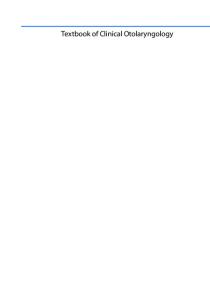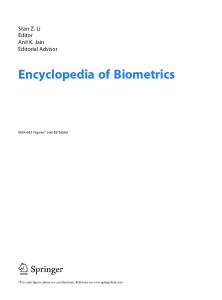The Aging Voice
- PDF / 1,552,072 Bytes
- 8 Pages / 595.276 x 790.866 pts Page_size
- 37 Downloads / 362 Views
GERIATRIC OTOLARYNGOLOGY (K KOST, SECTION EDITOR)
The Aging Voice Karen M. Kost 1 & Robert T. Sataloff 2
# Springer Science+Business Media, LLC, part of Springer Nature 2020
Abstract Purpose of Review Age-related dysphonia in the elderly is more common than appreciated because it is an under-reported symptom. Perceptually, the presbyphonic voice is characterized negatively as sounding weak, breathy, tremulous, and unstable. The frequent association with hearing impairment in this group may lead to social isolation and depression, with a significant impact on quality of life. Although several anatomical and physiological alterations are known to contribute to presbyphonia, singing prevents, in large part, many of the perceptual changes. Vocal exercises, with vocal fold augmentation or thyroplasty when indicated, provide significant improvement. Recent Findings Many older individuals with recognized clinical signs of presbylarynx, such as vocal atrophy, report a normal voice. This suggests that the mere presence of presbylarynx does not necessarily result in presbyphonia. Summary Recognition of presbyphonia is important because of its significant impact on quality of life. Appropriate diagnosis is essential in order to provide effective therapy. Keywords Presbyphonia . Presbylarynx . Vocal atrophy . Aging voice . Quality of life . Vocal exercise . Singing
Introduction The number of older individuals requesting consultations for dysphonia has trended upward in parallel with the aging population. As a complaint, presbyphonia is almost certainly under-reported and/or under-recognized, with a variable incidence of between 12 and 35% [1•, 2] noted in the literature. Older individuals make up an increasing percentage of the workforce in developed countries, with 20–35% of these over 65 [3, 4] requiring their voices for work [3, 4]. It is therefore not surprising Modified in part from: Sataloff, R.T. Johns, M.M., Kost, K.M., Geriatric Otolaryngology New York, New York: Thieme Publishing, Inc. 2015; with permission This article is part of the Topical Collection on Geriatric Otolaryngology * Karen M. Kost [email protected] Robert T. Sataloff [email protected] 1
McGill University Health Centre, Montreal, Province of Quebec, Canada
2
Department of Otolaryngology – Head and Neck Surgery, Drexel University College of Medicine, Philadelphia, PA, USA
that vocal fitness is a high priority within this particular group of older patients. In the elderly, it is well recognized that dysphonia not only adversely impacts quality of life but also significantly impedes the ability to communicate effectively. This is especially problematic with hearing-impaired spouses, family relatives, and friends. In actual fact, dysphonia and hearing loss have been found to frequently coexist in the elderly. In addition, hearingimpaired individuals are more likely to have dysphonia than their counterparts who do not have hearing loss [5]. It is not surprising that seniors with dysphonia and hearing loss are at risk for social isolation, depr
Data Loading...











